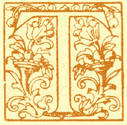
From, Beautiful Buildings in France & Belgium, Including many which have been destroyed during the war. Reproductions in Colour and Monochrome from rare old Prints and Drawings, by and after Prout, Boys, Coney, W. Callow, David Roberts, C. Wild and others, with descriptive notes, by C. Harrison Townsend, F.R.I.B.A.; New York: The Hubbell Publishing Co., 1916; pp. 180-185.
ROUEN : CATHEDRAL, SOUTH ENTRANCE
(C. Wild)
ROUEN : CATHEDRAL, SOUTH ENTRANCE
(G. Simonau)

 HE Cathedral of Notre Dame at Rouen is confessedly one of the finest Gothic buildings in Normandy. Its remarkable want of symmetry as regards plan, and disregard of rule in its constructional features and details, have not prevented the magnificent church from being, as a great critic says, “so splendid and so picturesque that we are almost driven to the wild luxuriance of Nature to find anything to which we can compare it.”
HE Cathedral of Notre Dame at Rouen is confessedly one of the finest Gothic buildings in Normandy. Its remarkable want of symmetry as regards plan, and disregard of rule in its constructional features and details, have not prevented the magnificent church from being, as a great critic says, “so splendid and so picturesque that we are almost driven to the wild luxuriance of Nature to find anything to which we can compare it.”
Built on the site of an earlier building destroyed by fire in 1200, its construction lasted from the beginning of the XIIth century to the early part of the XVIth, when the Tour de Beurre was completed. 184 This tower, on the left of Simonau’s vivid and brilliant sketch, is the loftier of the two towers flanking the West front — both of them unfinished. It owes its name to its having been built with the Indulgence-money paid for eating butter in Lent. The beautiful central tower, scarcely seen in the drawing, is surmounted by a modern iron spire of mean and poor design.
The South portal, shown in both Simonau’s and Wild’s drawings — which it is interesting to compare — is known as the Portail de la Calende, an imaginary animal supposed to symbolize Christ. The reliefs — very vigorous and charming — above the two door-openings represent the Passion.
The houses encumbering and obscuring the lower part of the church in the time of the two artists have been swept away, and, within recent years, the Cathedral itself has been — somewhat too thoroughly — restored.
Copyright © 2007 by Elfinspell